Welcome to Kraków
Delightful Medieval Town with a Royal Past
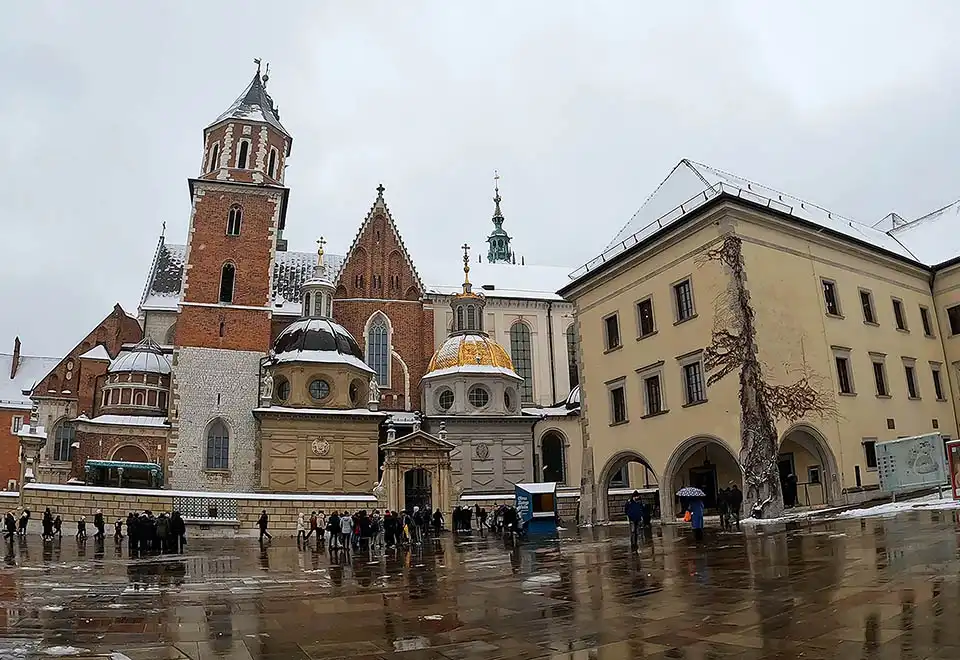
Wawel Cathederal (Archcathedral Basilica of Saint Stanislaus and Saint Wenceslaus), Kraków, Poland
A city steeped in history and culture that captivates visitors with its charm and timeless beauty. Nestled in the heart of Poland, Kraków is one of the country's oldest and most significant cities, boasting a legacy that stretches back to the 7th century.
As you wander through the cobbled streets of the historic center, you'll find yourself immersed in the city's architectural wonders. The Main Market Square, Rynek Główny, is a bustling hub surrounded by magnificent buildings, including the iconic St. Mary's Basilica. The square is home to the Kraków Cloth Hall, a historic marketplace where you can explore stalls offering traditional Polish goods and souvenirs.
Perched on Wawel Hill, overlooking the city, is Wawel Castle–a symbol of national pride and a treasure trove of Polish history. Its regal presence and stunning architecture make it a must-visit destination for history enthusiasts.
Kraków's cultural scene is vibrant and diverse. The city hosts a myriad of events, festivals, and concerts throughout the year, showcasing its rich artistic heritage. Don't miss the opportunity to explore the Jagiellonian University, where renowned figures like Copernicus and Pope John Paul II once walked the halls.
For a poignant and reflective experience, consider a visit to the Auschwitz–Birkenau concentration and extermination camp, located in the nearby suburb of Oświęcim. This sobering site serves as a stark reminder of the dark chapters of World War II and the Holocaust.
Indulge your taste buds in Kraków's diverse culinary offerings. From savory pierogi and hearty kielbasa to traditional Polish soups, the city's cuisine is a delightful journey for food enthusiasts. Kraków's café culture is also worth exploring, with charming coffee shops scattered throughout the city.
Throughout the year, Kraków hosts various festivals that add to its lively atmosphere. The Kraków Film Festival, the Jewish Culture Festival, and the enchanting Krakow Christmas Market are just a few examples of the events that draw both locals and tourists alike.
The Jewish quarter in Kraków is called Kazimierz. Kazimierz has a rich history and was the center of Jewish life in Kraków for centuries. The district is known for its historic synagogues, narrow streets, and vibrant atmosphere. Before World War II, Kazimierz was a thriving Jewish community, but much of it was devastated during the war, with the population mostly murdered. In recent years, efforts have been made to restore and preserve the Jewish heritage of Kazimierz, and it has become a popular area for both locals and tourists to explore.
As you explore Kraków, consider venturing beyond the city limits to the Wieliczka Salt Mine, a UNESCO-listed site famous for its underground chambers and intricate salt sculptures.
In Kraków, history comes alive, culture thrives, and every corner tells a story. Whether you're strolling through the historic streets or savoring the local flavors, Kraków welcomes you with open arms to experience the richness of Poland's past and present.
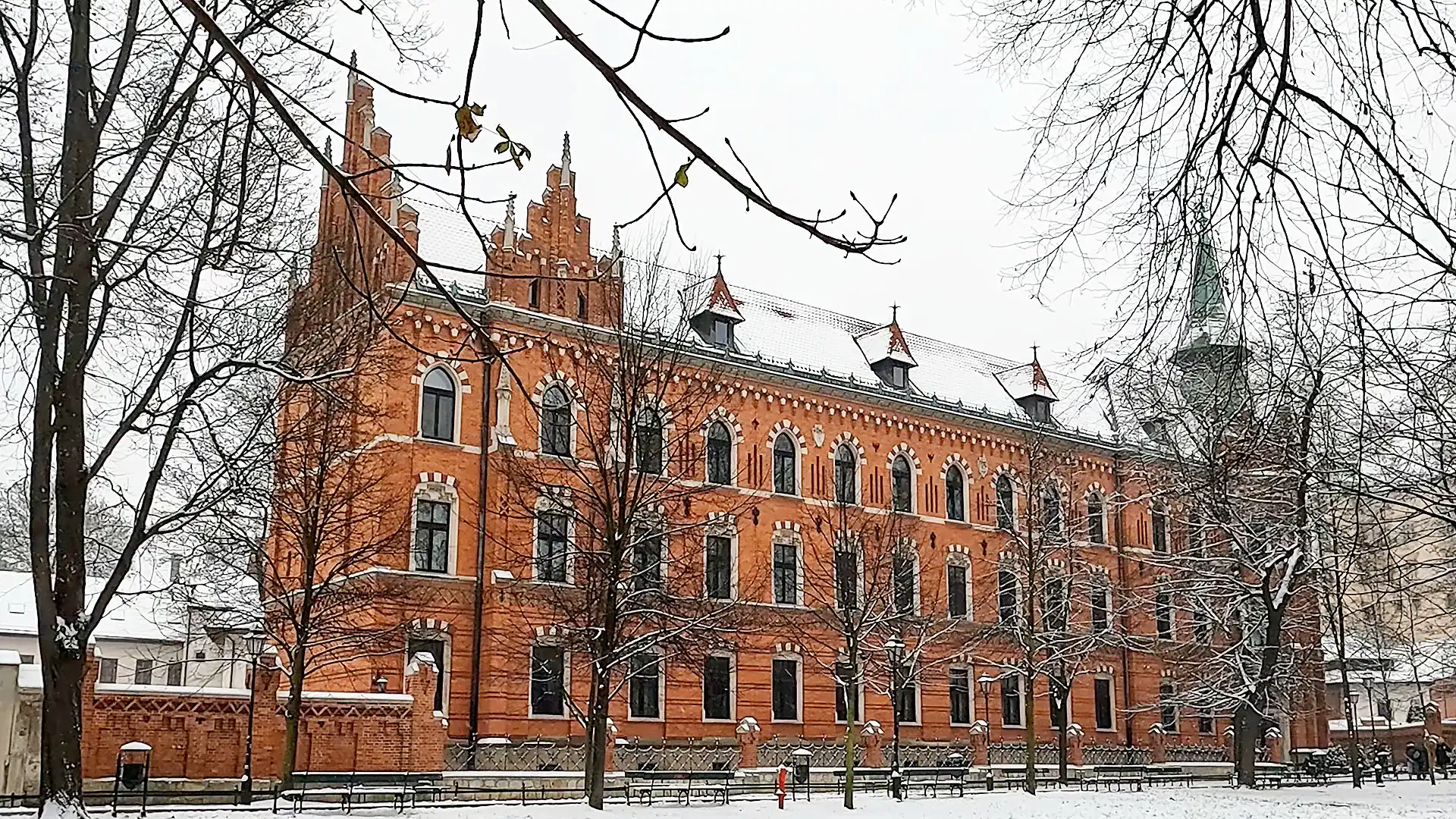
Beautiful Krakow Architecture
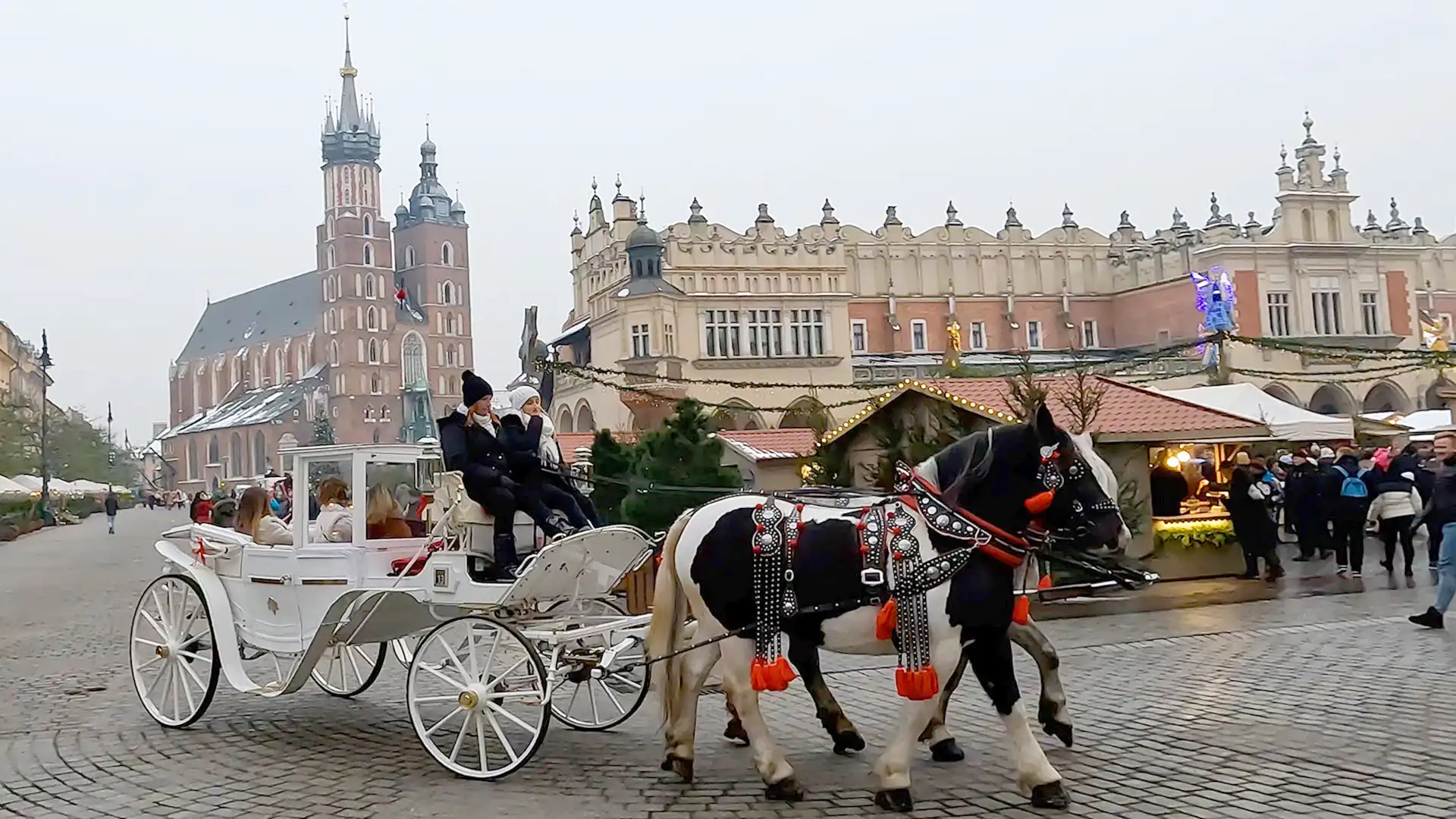
Horse Carriage in Krakow Old Town
Book Your Holiday to Poland Now
Book your Holiday on TravelUp and get £24 off using code HOLIDAY24 Bookings over £750
Some History of Kraków
Kraków's roots reach back to the 7th century, evolving into a bustling center for trade and craftsmanship by the 10th century. It later became Poland's capital in 1038, reigning until 1596. The city's iconic Wawel Castle housed Polish kings, witnessing centuries of prosperity and cultural richness.
The 15th and 16th centuries marked Kraków's Golden Age, characterized by economic and cultural flourishing. The Jagiellonian University, founded in 1364, solidified Kraków's status as an intellectual hub.
The Renaissance era brought architectural wonders like the Cloth Hall, contributing to Kraków's cultural renaissance. The subsequent 17th century, however, saw challenges with the Swedish Deluge and Kraków's diminishing political influence.
The late 18th century witnessed the partitions of Poland, erasing the nation from the European map. Kraków, under Austrian protection, retained a semblance of autonomy as a Free City.
World War II left an indelible mark, with Nazi occupation and the tragic events of the Holocaust, notably at Auschwitz-Birkenau. The post-war period saw Kraków integrated into the People's Republic of Poland, undergoing efforts to rebuild and preserve its historical character.
The fall of communism in 1989 ushered in a new chapter. Kraków emerged as a cultural and tourist destination, with its historic sites, festivals, and vibrant arts scene attracting global visitors. Today, Kraków stands as a testament to Poland's resilience and enduring cultural heritage.
About The Area
Lesser Poland stretches from the Carpathian Mountains in the south to Pilica and Liwiec rivers in the north. The region borders Mazovia to the north, Podlaskie to the northeast, Red Ruthenia to the east, Slovakia to the south, Silesia to the west, and Greater Poland to the northwest.
The historical region of Małopolska (or Lesser Poland) is a distinct region within the wider Polish cultural region, and has developed different customs, costumes and, to a lesser extent, language. Sitting in the southeast of the current Polish state and bordering Czechia, Solvakia and Ukraine, the region has long attracted many minorities including Vilamovians, Halcnovians, Gorals, Lemkos and Polish Jews and Walddeutsche Germans. Prior to the 20th century, the region had been a bastion of tolerance.
The events of the Second World War and its aftermath impacted this cultural millieu significantly, with the Jewish polpulation mostly murdered, and many ethnic Germans were either expelled from Poland or also murdered. At the outbreak of World War II the Jewish population was estimated to be about 70,000 people, or about 5% of the population. Today there are less than 100 Jews living in the city. Unfortunately, it was not just the Nazis who persecuted the Jews of Kraków, as returning Jews after the World War II were also persecuted by Poles and Soviet forces, including the forced expulsion of more than 15,000 Jews in 1968. Unfortunately, the Jews were scapegoated in 1968 as they had been on many previous occasions.
The city of Kraków escaped relatively unscathed from World War II, at least as far as the physical structures and architecture are concerned. The city was not substantially bombed by the Allies, and the Germans appreciated the European high culture of the city, and therefore spared its destruction. The advancing Soviet army was commanded by a Pole and there is a theory that the city was also spared for that reason.
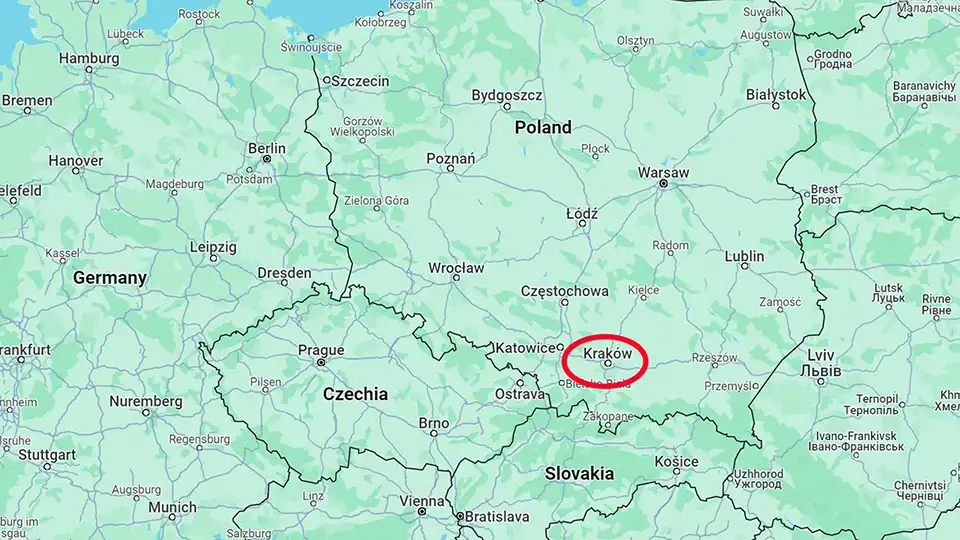
Eastern Europe Map
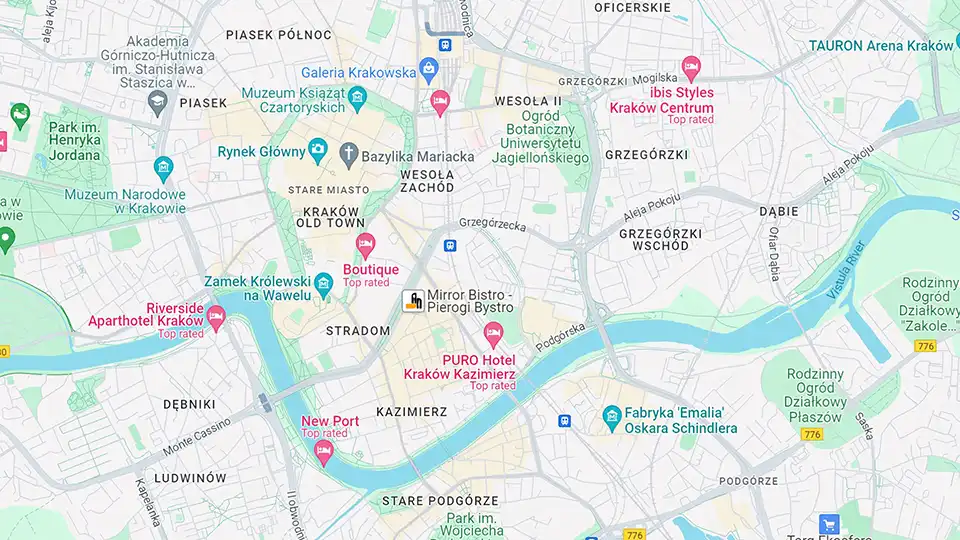
Krakow Map
What To See
Kraków is the second largest city in Poland, and was arguably the first Polish capital. The city has been the seat of the Polish kings although during some periods, the city was the formal capital though power rested in Warsaw. The city still retains a place as a bastion of Polish culture and is regarded as being the cultural heart of Poland. Although Warsaw has been the official national capital since the early 17th century when King Sigismund III Vasa moved his capital there, Kraków retains some moral authority as the cultural repository of everything Polish.
Founded in the 7th century and retaining the mantle of capital for over 800 years, Kraków has no shortage of medieval history to draw on. From Wawel Castle and Wawel Cathedral (Archcathedral Basilica of Saint Stanislaus and Saint Wenceslaus), to St. Mary's Church, to the Jewish Quarter and the Old Town, Kraków has a huge range of historical areas of interest. The city of Kraków is a UNESCO listed World Heritage site
The Main Sights
- Wawel Castle and Wawel Cathedral: The Wawel Castle complex, perched on a hill overlooking the Vistula River, is a symbol of Polish royalty. It includes the stunning Wawel Cathedral, where many Polish kings and queens were crowned and buried.
- Main Market Square (Rynek Główny): The Main Market Square is one of the largest medieval town squares in Europe. It is surrounded by colorful townhouses and features the Cloth Hall (Sukiennice) at its center, where you can find traditional Polish crafts and souvenirs.
- St. Mary's Basilica (Kościół Mariacki): Located on the Main Market Square, St. Mary's Basilica is known for its Gothic architecture and the hourly trumpet call from the tower. The interior is adorned with beautiful stained glass windows and artwork.
- Jagiellonian University: Founded in 1364, Jagiellonian University is one of the oldest universities in Europe. The Collegium Maius, the university's main building, is open to visitors and offers a glimpse into the academic history of the city.
- Kazimierz (Jewish Quarter): Kazimierz is a historic district with a rich Jewish heritage. Explore its narrow streets, visit historic synagogues like the Old Synagogue and Remuh Synagogue, and discover the unique atmosphere of this culturally significant area.
- Schindler's Factory (Oskar Schindler's Enamel Factory): The former enamel factory, made famous by Steven Spielberg's film "Schindler's List," now houses a museum that provides insights into Kraków's history during World War II.
- Planty Park: This green belt surrounds the Old Town and was created on the site of the city's medieval defensive walls. It's a pleasant place for a stroll and provides a peaceful retreat from the bustling streets.
- Kościuszko Mound: Offering panoramic views of the city, the Kościuszko Mound is a man-made mound honoring Tadeusz Kościuszko, a Polish national hero. Did you know the highest mountain in mainland Australia is named after this mound and the hero it represents?
The following 2 destinations are outside the city, and require your own transport or a tour of some sort
- Auschwitz-Birkenau Concentration Camp: While not in Kraków, Auschwitz-Birkenau is an essential historical site located nearby. Guided tours are available to explore the museum and memorial dedicated to the victims of the Holocaust.
- Wieliczka Salt Mine: A UNESCO World Heritage Site, the Wieliczka Salt Mine features an underground world of chambers, tunnels, and sculptures, all carved from salt. It's a unique and fascinating excursion just outside Kraków.
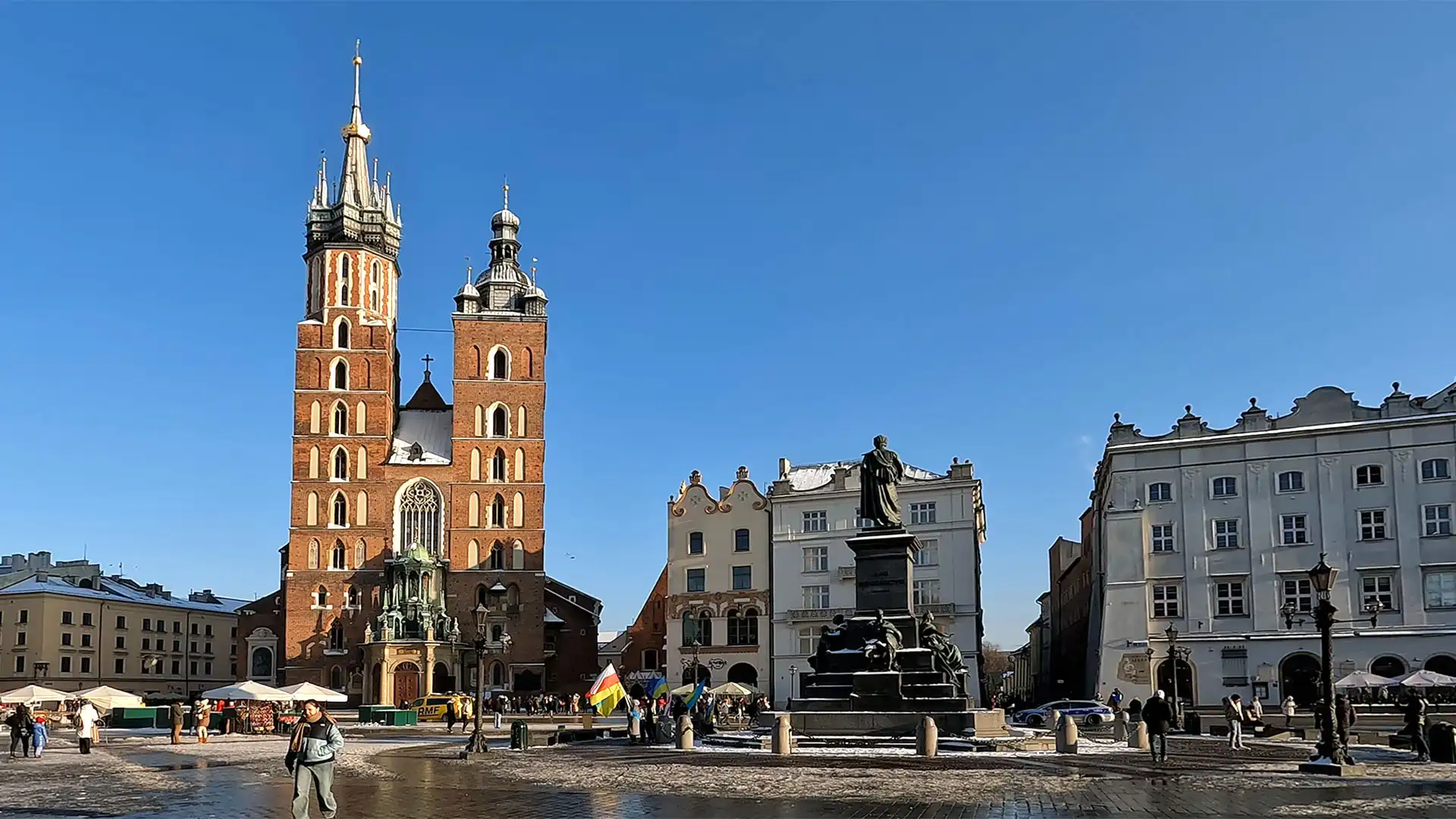
Krakow Main Square with St Mary's
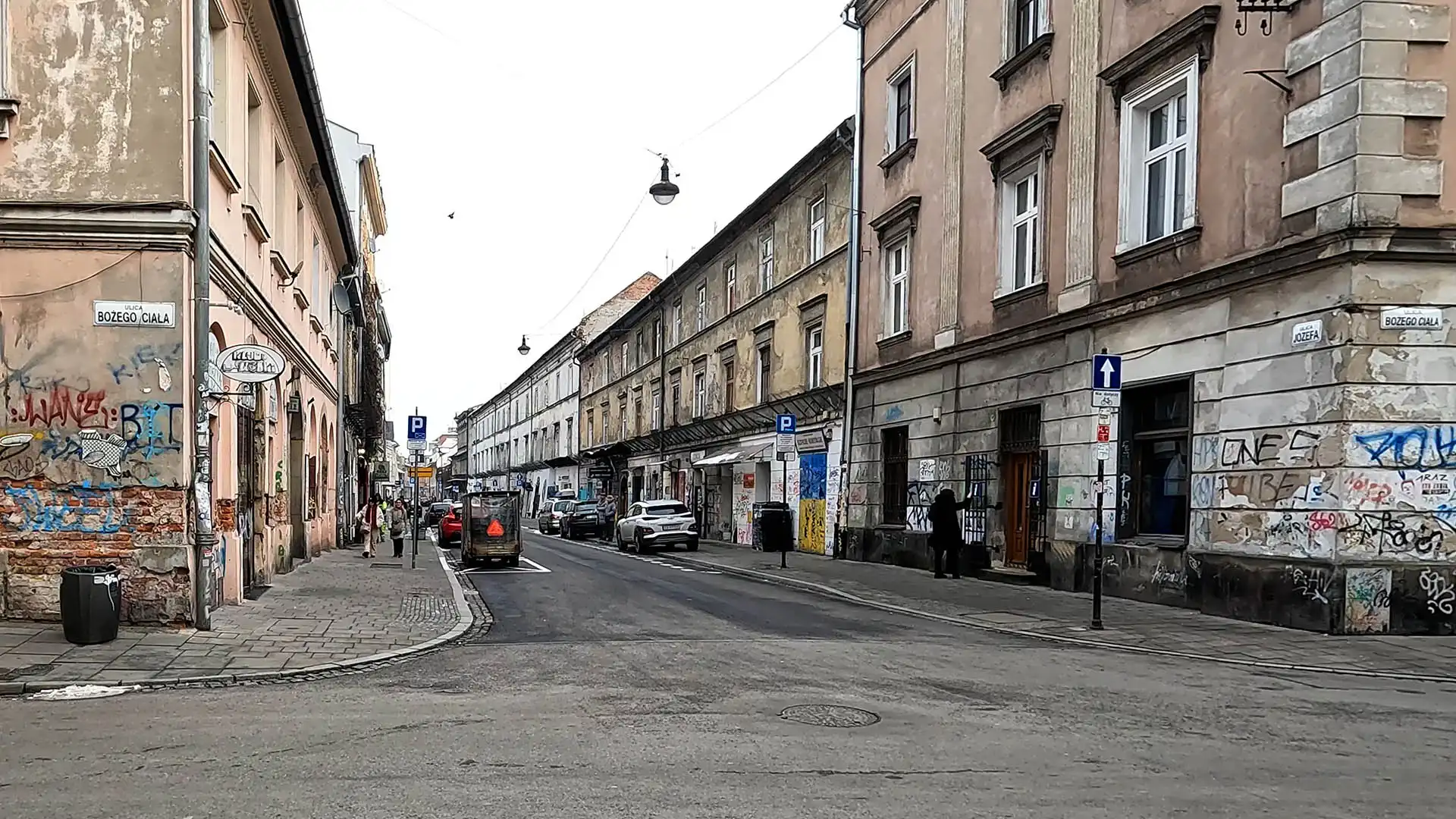
Kazimierz Street Scene
When To Go
Any time is a good time to visit Krakow if you want to soak up the culture, however it can get very crowded in Summer, and the Spring or Autumn seasons may be more pleasant. It's definitely fun to visit at Christmas time as well, when you may have a blanket of snow, and the Christmas markets are in full swing. Christmas is our favorite time to visit.
Getting There & Getting Away
Flights
Rail
The main rail station in Kraków is Kraków Głowny station, which serves as a multi-modal transit hub for trams, buses and trains. Kraków Głowny also has an attached shopping mall, Galeria Krakowska.
The station serves Eurocity (EC/IC) services to Berlin and Przemysl and intermediate stations, Express Intercity Premium (EIP) to Warsaw and other northern stations on the Baltic, Express Intercity (EIC) to Warsaw and Zakopane and a wide range of Intercity (IC) and Regional (PR) services to other nearby cities.
Long–Distance Buses
There are a wide range of inter–city bus routes in Poland serviced by a number of different companies. Tickets may be purchsed online or at a bus station. The Krakow bus station is located conveniently next to the main train station
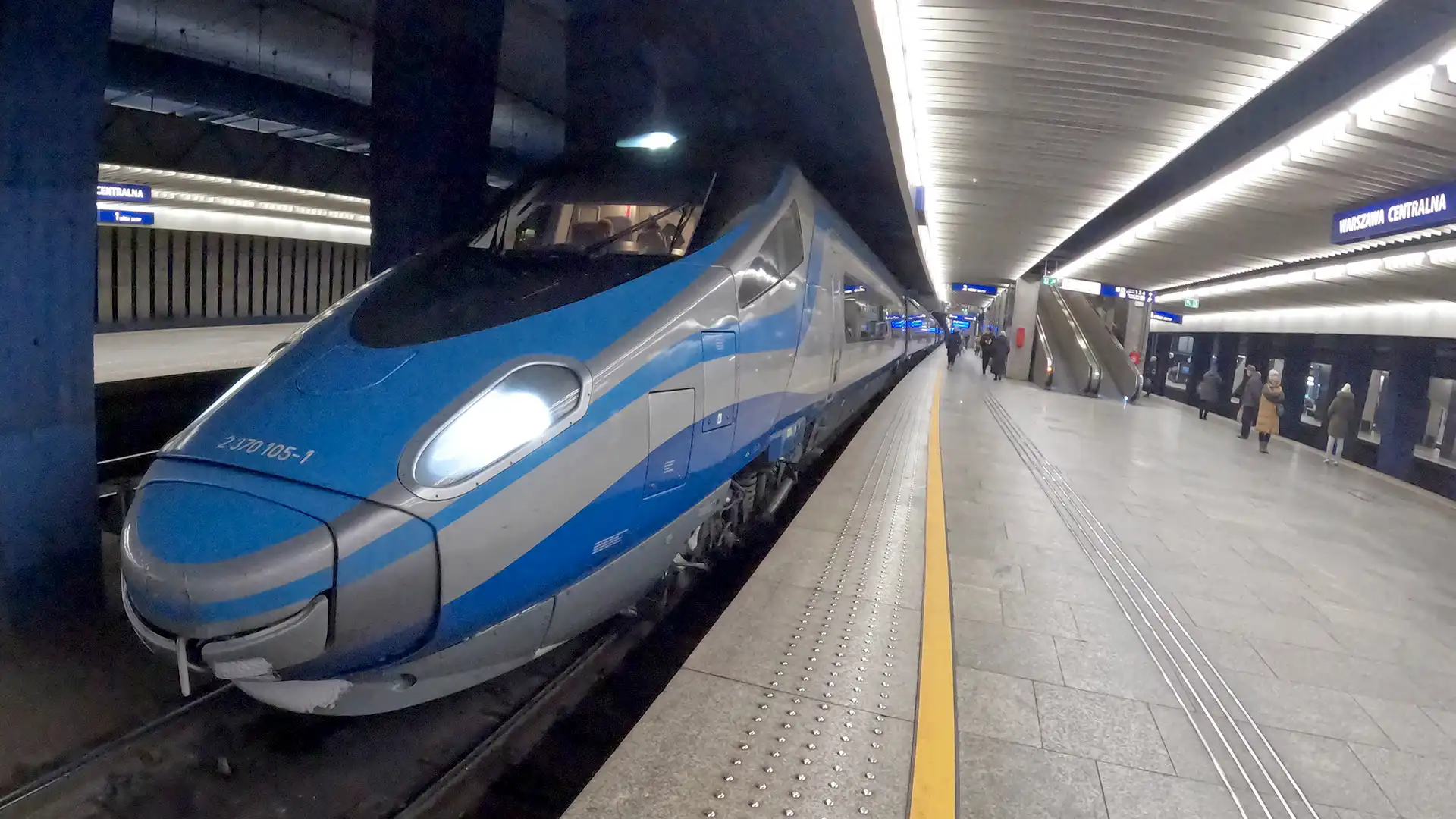
High Speed PKP Intercity Train
Getting Around
Trams
Krakow has a well–developed, cheap and efficient public tram system. It is a great way of getting around the city. Trams are frequent, and will take you most places you need to go. They connect to other forrms of transport such as rail and bus networks.
Local Buses
To go slightly further afield, use the buses. A good eample would be a visit t Auschwitz or the Salt Mines, as these are beyond the metropolitan tram network
Taxis and Rideshare
Taxis are readily available, as are ride hailing services such as Uber and Bolt. Taxis are more expensive than ride hailing services, however the drivers are often more knowledgeable, and the industry appears to be well regulated. There is an app FreeNow that can be used to book taxis
River Tram
The River Tram runs a single route along the Vistula River, and only during the months of June to September, however it is a nice way to soak in views of Wawel Castle and other river sights
Krakow Trams
Eating & Drinking
Local Specialties
Kielbasa is any type of meat sausage from Poland and is a staple of Polish cuisine. It comes in dozens of varieties, smoked or fresh, made with pork, beef, turkey, lamb, chicken or veal with every region having its own speciality. There are official Polish government guides and classifications of sausages based on size, meat, ready-to-eat or uncooked varieties.
Pierogi are filled dumplings, made by wrapping unleavened dough around a filling, and occasionally flavored with a savory or sweet garnish and cooking in boiling water. Typical fillings include potato, cheese, quark, sauerkraut, ground meat, mushrooms, fruits, and/or berries. Savory pierogi are often served with a topping of sour cream, fried onions, or both.
Obwarzanek are a pastry dough cross between a bagel and a doughnut. They are usually covered in sesame seeds. They are a specialty of Krakow and you can buy them for 2 Zlotty from the little blue carts all over the city.
Zapiekankaare toasted open–face sandwiches made of a sliced baguette or other bread roll topped with sautéed mushrooms, cheese and other ingredients. They are a throwback to the Communist era, and although popular here, are really nothing to g out of your way for.
Kremówka is custard and cream dessert served as a slice between puff pastry. They are almost identical to an Australian Vanilla Slice and are delicious.
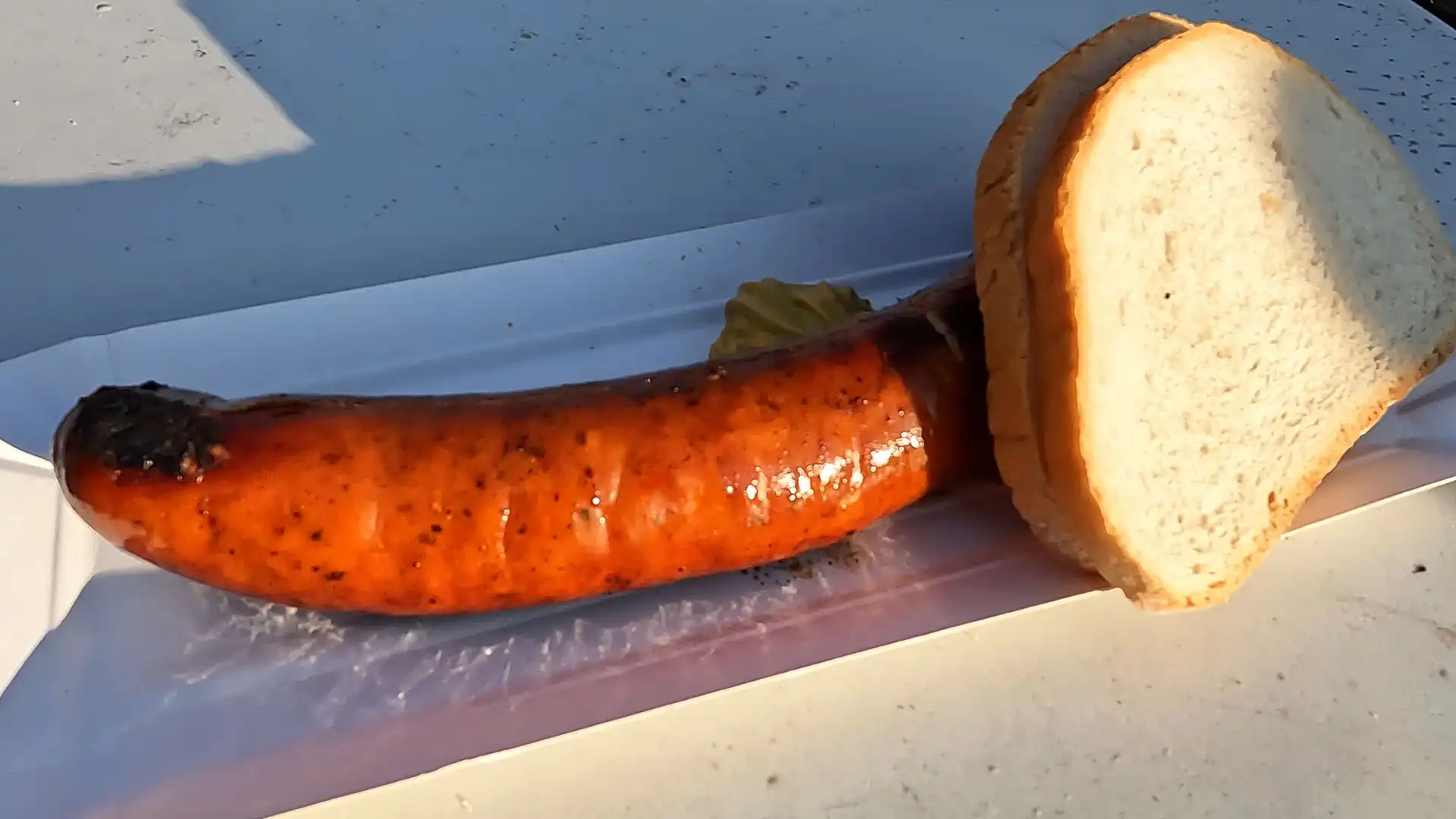
Grilled Keilbasa Wiejska (Farmhouse Sausage), served with Rye Bread and Mustard
Places To Stay
Top–Rated Hotels
- Hotel Copernicus: A luxury hotel located near Wawel Castle, offering elegant rooms and a historic atmosphere.
- Hotel Stary: Situated in the heart of the Old Town, Hotel Stary is known for its stylish design and top-notch amenities.
- Sheraton Grand Krakow: Located on the bank of the Vistula River, this hotel provides modern comfort and beautiful views of the city.
- Hotel Wentzl: A boutique hotel on the Main Market Square, offering unique and individually designed rooms.
- Radisson Blu Hotel, Krakow: Situated near the historic Kazimierz district, this hotel provides modern accommodations and a convenient location.
- Hotel Gródek: A boutique hotel with a historic touch, located within walking distance of the Main Market Square.
- Niebieski Art Hotel & Spa: Known for its contemporary design, this hotel is located along the Vistula River and offers spa facilities.
- The Bonerowski Palace: A luxurious hotel in the heart of the Old Town, known for its elegant interiors and attentive service.
- Hotel Pod Roza: With a history dating back to the 17th century, this hotel offers a blend of tradition and modern amenities.
- Hotel Kossak: Overlooking the Wawel Castle and the Vistula River, this hotel provides panoramic views and comfortable accommodations.
- Hotel Unicus Palace: Housed in a historic building, this hotel offers a sophisticated atmosphere and is close to major attractions.
- Hotel Grodek: Located near the Planty Park, this boutique hotel provides a peaceful retreat in the heart of the city.
- Hotel Amber Design: Situated in the Kazimierz district, this hotel features stylish design elements and is close to cultural landmarks.
Mid–Range Hotels
- Hotel Jan: Located near the Old Town, Hotel Jan offers comfortable accommodations with modern amenities.
- Hotel Senacki: Situated in a historic building, Hotel Senacki is close to the Main Market Square and provides a cozy atmosphere.
- Hotel Amber: A modern hotel located in the Kazimierz district, Hotel Amber offers stylish rooms and is within walking distance of cultural attractions.
- Hotel Pollera: With a central location, Hotel Pollera provides a blend of historical charm and contemporary comfort.
- Hotel Royal: Situated near Wawel Castle, Hotel Royal offers a convenient location and comfortable rooms.
- Hotel Maltanski: Located by the Vistula River, Hotel Maltanski provides a tranquil setting while being close to the city center.
- Hotel Wawel: Positioned in the Old Town, Hotel Wawel offers a combination of modern amenities and a classic atmosphere.
- Hotel Unicus Krakow Old Town: A contemporary hotel in the heart of the city, offering comfortable rooms and proximity to major attractions.
- Metropolitan Boutique Hotel: Situated in the city center, Metropolitan Boutique Hotel provides stylish accommodations and is close to cultural sites.
- Aparthotel Pergamin: Offering apartment-style accommodations, Aparthotel Pergamin provides flexibility and comfort for guests.
- Hotel Polski Pod Białym Orłem: Housed in a historic building, this hotel is centrally located and features a charming interior.
- Golden Tulip Krakow City Center: A modern hotel near the Main Market Square, Golden Tulip offers contemporary rooms and convenient access to key attractions.
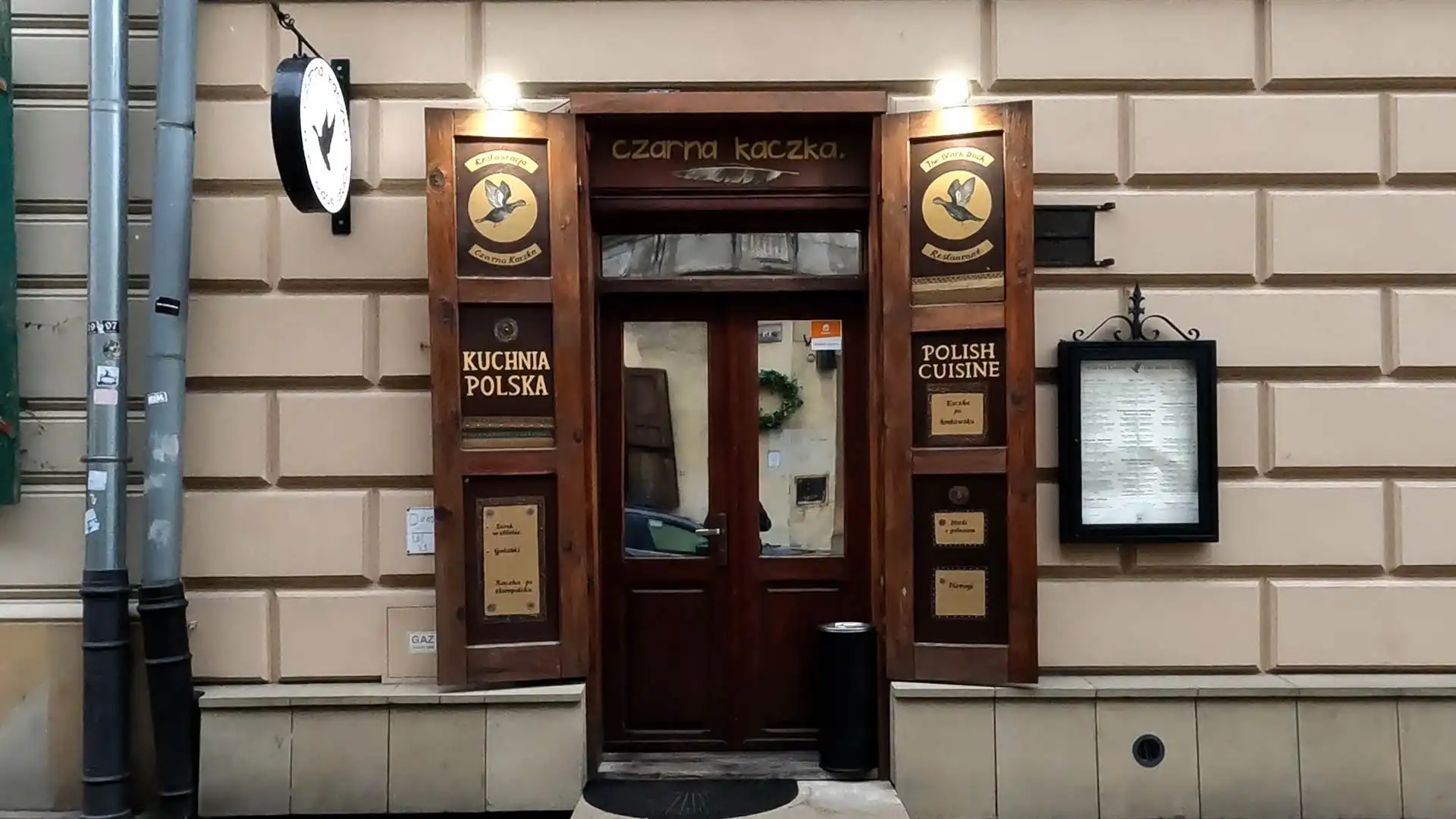
Black Duck Restaurant
Emergency Contacts
The number 112 is a universal emergency services number that can be dialed for immediate assistance from any location in the European Union, including Poland. When you call 112, your call will be directed to the appropriate emergency service, whether it's an ambulance, fire brigade, or police.
Also, in case of a specific emergency, you can also specifically dial:
- 999 Ambulance
- 998 Fire Brigade
- 997 Police
Copyright © 2025 travel-with-mark.com. All rights reserved. No part of this website or any of its contents may be reproduced, copied, modified or adapted, without the prior written consent of the owner, unless otherwise indicated for stand-alone materials. Unauthorized use is strictly prohibited. All trademarks, service marks, and trade names used in this website are the property of their respective owners and are used for identification purposes only. Your access to and use of this website is subject to our terms and conditions. Details of our privacy practices may be found in our privacy notices